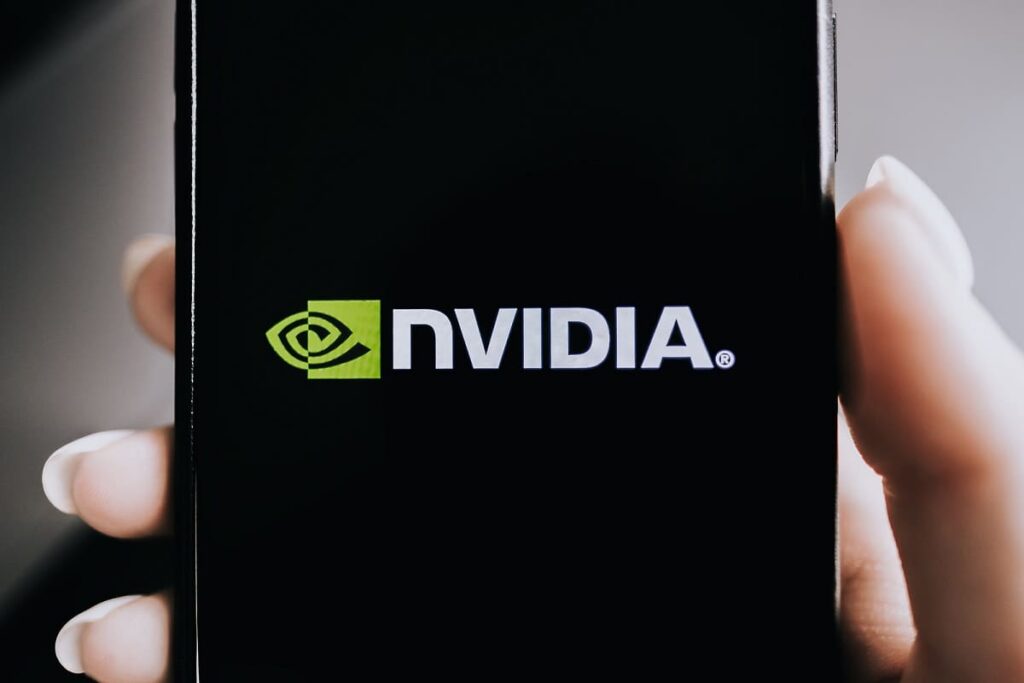The Right Time to Sell NVIDIA Stock
Table of contents

We recently published a piece which breaks down the tech stock universe into size buckets, the largest being companies with a market cap of $100 billion or more – the so-called “mega caps.” Ideally, we’re able to discover mega caps before they reach that size and invest in them. When they grow to occupy more than 10% of our total portfolio, we trim them. We’re currently holding two mega caps in our own tech stock portfolio, one of which is NVIDIA (NVDA).

Our last piece on NVIDIA titled Why We’re Selling NVIDIA Shares After the Split was a bit clickbait. We weren’t selling shares because the company split, we were simply trimming our position because it had become significantly overweight. Now that NVDA shares have settled back down to earth, we’re no longer overweight. However, we’ve been asking a much broader question which relates to our own tech investing methodology. Just when do we decide that a mega cap has exhausted its growth entirely and exit the position? The answer is both simple and complicated – when growth stalls or our thesis changes.
NVIDIA’s Growth
From the perspective of recent annual and quarterly revenue growth, NVIDIA has been on an absolute tear.

Of course, this means that the first time they stop showing growth, investors will punish them heavily. To determine whether growth can be sustained, we can evaluate a number of things:
- Our original thesis surrounding the growth of AI chips
- The failed ARM acquisition
- Competitive pressures
Let’s address each of these bullet points in the order presented above.
The Original AI Chip Thesis
The man who coined the term artificial intelligence in 1956, John McCarthy, once said, “as soon as it works, nobody calls it AI anymore.” We need to consider that when examining NVIDIA’s exposure to AI chips which they now corral into a revenue segment called “Data Center: High Performance Computing and AI.” In May 2020, we published a piece titled Is NVIDIA Stock Still a Good Way to Invest in AI Chips? which talked about how data centers are becoming an increasingly important part of AI infrastructure. After all, AI algorithms are only as good as the big data they’re being fed. NVIDIA’s acquisition of Mellanox helped them grow data center revenues so that today they represent nearly 43% of total revenues.

We’ll continue to use NVIDIA’s Data Center revenue segment as a proxy for the progress they’re making towards our original AI chip investment thesis. So far so good.
The ARM Fiasco
Earlier this month, NVIDIA announced plans to terminate their proposed acquisition of ARM citing “significant regulatory challenges preventing the consummation of the transaction.” This cost NVIDIA about $1.35 billion, not to mention loads of time, money, and resources that were wasted trying to put the whole thing together. ARM will now pursue an initial public offering while we’re left wondering what NVIDIA plans next for acquisitive growth, especially in light of a competitor – AMD – moving to acquire Xilinx. Up until now, NVIDIA has been touting the ARM transaction as a key component of their growth strategy. Absent of that, their December 2021 Shareholder Outreach wasn’t overly inspiring, especially the slide about divisive D&I initiatives. One hopes the company has a backup plan to execute upon given the ARM deal fell through, especially considering their key competitor just got a whole lot bigger.
Competition: AMD and Xilinx
It’s been over 5 years since we published our piece on Investing in GPUs for AI – AMD GPUs vs NVIDIA GPUs. In that piece, we commented on how NVIDIA seemed to be better positioning themselves as a company selling GPUs for AI applications. Today, both AMD and NVIDIA have investor decks that look remarkably similar with both companies targeting the same addressable markets. And around the same time NVIDIA announced their failed acquisition, AMD announced a successful one.

The same year we published our piece on AMD GPUs we also coined a piece titled Xilinx – Investing in FPGAs For AI Hardware. In our tech stock report, we had Xilinx as a “like” noting, “Xilinx is an interesting bet on AI, as well as a competitive threat to NVIDIA.” That’s because Xilinx FPGAs are being used for data center applications, the same use case that NVIDIA is targeting. AMD’s acquisition of Xilinx puts them in a much better position to compete with NVIDIA.
Given both AMD and NVIDIA are converging on the same addressable markets, we can use our simple valuation ratio (market cap / annualized revenues) to see how they compare. NVIDIA is more richly valued of the two.
- NVIDIA (602 / 30.56) = 19.7
- AMD (197 / 19.32) = 10.2
The gap in valuation doesn’t appear to be about the ability to grow revenues. In looking at the compound annual growth rate (CAGR) of revenues for these two companies over the last 12 quarters, they’re nearly identical.
- NVIDIA 12-quarter CAGR: 10.8%
- AMD 12-quarter CAGR: 11.7%
NVIDIA might be more richly priced because they’re generating a lot more cash. Here’s a look at net income for each company over the past twelve quarters (the labels are purposefully ignoring NVIDIA’s confusing fiscal year).

The traditional way to value companies isn’t by looking at price-to-revenues as we do, it’s by looking at price-to-earnings. As a growth company matures, more focus is placed on their ability to grow profits, and less on growing revenues. That’s why our simple valuation ratio is more effective for early-stage companies that are primarily focused on capturing market share. As for investors who are trying to decide between these two firms, there may be good reason to stick with the company that’s generating the most cash.
Selling NVIDIA Stock
The extent to which we’ve already profited from our investment in NVIDIA is remarkable. Just based on the shares we trimmed during 2021 alone, we recovered our cost basis more than seven times over. That said, we mustn’t fall prey to the house money effect when considering our remaining position which happens to be the largest holding in our tech stock portfolio with a weighting of just over 10%. Growth continues to shine for NVIDIA, and our thesis hasn’t changed at all, so there’s really no reason to sell right now.
Our recent piece on Buying Tech Stocks in Times of Market Volatility highlighted the importance of moving slowly in today’s market where investors are starting to become scared. While we typically only focus on revenues when evaluating growth stocks, there’s something to be said for the amount of cash that NVIDIA is managing to generate. Pundits have recently been commenting about how spooked investors will start to ignore promises of revenue in the future and start looking towards companies that generate cash now. NVIDIA seems to be the best of both worlds. They’re generating loads of cash today, and revenue growth is through the roof. Let’s hope they’re able to fill the ARM acquisition gap with something equally compelling.
Conclusion
Everyone tells you what stocks you ought to buy, but none of those pundits are around to tell you when to sell. Once you’ve ridden your winners long enough such that they constitute a meaningful percentage of your portfolio, you then need to decide the proper time to exit. Selling is a process that takes time in much the same way we accumulate positions over time using dollar-cost-averaging. We’ve reaped some serious rewards from NVIDIA so far, and there’s every reason to believe that this AI chip growth story will continue to bear fruit. The biggest unknown is what the company plans to do with their $10 billion in net cash (and growing) now that the ARM acquisition has fallen through.
Sign up to our newsletter to get more of our great research delivered straight to your inbox!
Nanalyze Weekly includes useful insights written by our team of underpaid MBAs, research on new disruptive technology stocks flying under the radar, and summaries of our recent research. Always 100% free.














Useless article no information obviously written by a bean counter that doesn’t understand technology.
You can actually add value to the conversation by raising some points of contention about the piece. Or you can just leave that lazy run-on sentence to show others what not to do.
Let’s start over. What did you dislike about the piece? We love hearing counterpoints.